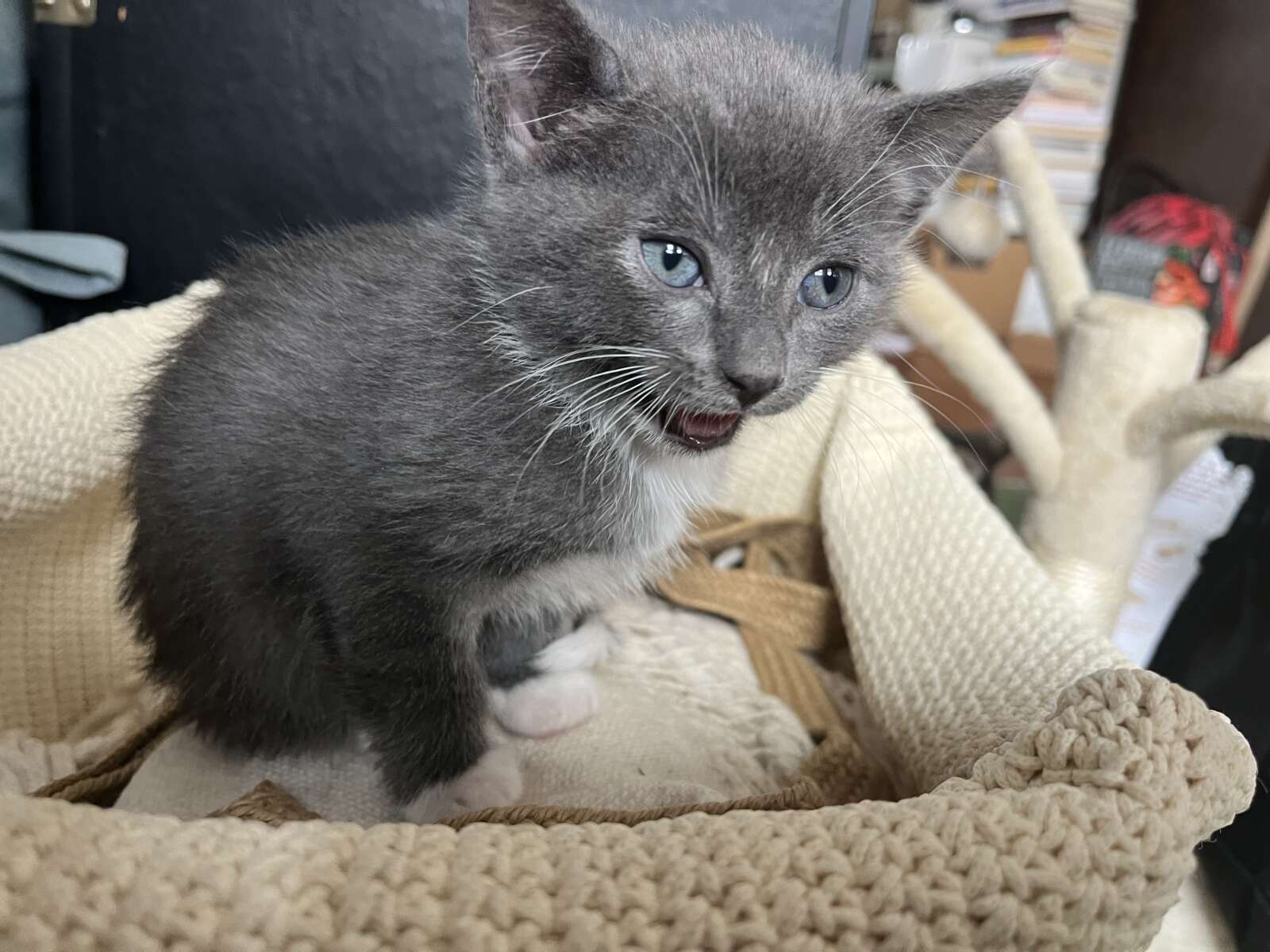This is a sponsored post by Dr. Elizabeth Arguelles, veterinarian and owner of Just Cats Clinic at Lake Anne Plaza.
As concerned and loving cat parents, every one of us hates to think of our beloved little ones experiencing pain. And if that happens, we want to be ready to help them successfully manage the discomfort. The problem is that felines are incredibly good at hiding pain. Evolutionarily, predators displaying any outward signs of pain are at a disadvantage in the wild so cats instinctually hide their symptoms.
Fortunately, veterinary medicine has advanced and we are better able to detect and understand pain in cats. This, in turn, has made pain management much easier and more feasible for cat parents. In this article, we’ll talk about some of the options available to you in the event that your cat is experiencing pain.
How can you tell if your cat is in pain?
Veterinarians use a standardized pain scale assessment to help determine if your cat is in pain and if so, what their pain level is. This assessment should be taken at every examination at your vet’s office as part of a preventive care plan to ensure your cat stays pain free and subtle signs are not missed.
The scale ranges from 0 to 4 with 0 being content and comfortable and 4 being severe pain. Cats at a stage 1 pain score are more difficult to assess in clinic since the signs are so subtle and frequently are more likely noticed by an owner. Symptoms include less interested or change in normal routine, or becoming withdrawn from surroundings.
Cats at a stage 2 pain score may seek solitude and hide, coat appearing rough, decreased appetite or responds aggressively when touched in painful area. Cats at a pain score of 3 may constantly yowl, hiss, or growl, reacts aggressively to touch, pulls away, squinting or closed eyes.
Observation at home can be one of the best places to observe some of the more subtle signs of pain. Ultimately, you know your cat best and any behavior that’s different or unusual should be noted to your veterinarian. When assessing pain at home, look for these more subtle signs or symptoms:
- Avoiding “going vertical” (i.e. jumping to high places, climbing stairs, etc.)
- Sleeping more than usual (not always easy to determine with your average lazy house cat!)
- Litter box issues
- Resisting being handled or picked up
- Change in normal routine or normal behavior
- Withdrawing or hiding
- Displaying unexplained aggression
- Increased or decreased grooming
- Walking with a stiff gait or limping
- Change in appetite
It is important to note that in addition to pointing to pain, these are also often symptoms of underlying diseases and injuries. As a result, it is imperative that you schedule an appointment with your vet as soon as you notice any of the above signs. Be sure to observe your cat carefully prior to the vet visit so that you can inform him or her of any changes.
How is pain in cats treated?
Veterinarians can treat pain in a variety of ways including medications, acupuncture, and laser therapy.
The most common method is pain medications. Just as in human medicine, different types of pain medications work for different ailments and levels of pain so which drug depends widely on your cat’s need and their risk factors. Some of the more common pain medications are:
Nonsteroidal Anti-Inflammatory Drugs (NSAIDs) – These drugs interfere with the body’s production of inflammatory molecules that trigger pain and swelling. They are generally used to treat mild to moderate pain and discomfort. Though effective, NSAIDs must be used with caution because they can cause liver, kidney, stomach and/or intestinal problems. Never give your cat human NSAIDs like Tylenol – they are toxic and can be fatal!
Opioids – Opioids are stronger than NSAIDs and are used to treat more severe or chronic pain. This class of pain-relief medications includes morphine, codeine, fentanyl, buprenorphine and hydromorphone. Your veterinarian will generally use these to treat surgical pain, dental pain, as pain management for hospice patients, or even to help control severe arthritis pain.
Corticosteroids – Cortisone and synthetic cortisone-like drugs such as prednisone, prednisolone, methylprednisolone, and dexamethasone are potent anti-inflammatory medications. While not necessarily a pain medication, corticosteroids help reduce inflammation which can aid in pain management for arthritis or severe allergies.
In addition to the traditional medications used to treat feline pain, new applications of existing medications such as gabapentin have shown promise in aiding pain management for some patients.
Less invasive methods of pain management include acupuncture and laser therapy. Acupuncture works by using tiny needles to stimulate healing by normalizing nerve function and circulation. Those needles are inserted into various pressure points on your cat’s body depending on the ailment.
Laser therapy uses a beam of laser light to penetrate tissue deeply without damaging it. The laser energy induces a biological response in certain cells leading to increased healing, and decreased pain and inflammation. These non-invasive treatments can be a great addition to your cat’s pain management plan.
Remember, it is important to remember to never give your cat any pain medication without it being prescribed by your veterinarian. If you notice any signs of pain or discomfort, contact your veterinarian.
For more information please visit our feline health library at: www.justcatsclinic.com.
The views and opinions expressed in the column are those of the author and do not necessarily reflect the views of Reston Now.






